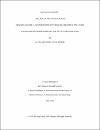Designing Flexible and Porous Polystyrene/Silver Doped Zinc Oxide Nanocomposite Fiber Sorbents for Oil/Water Separation
Date
2020-06Metadata
Show full item recordAbstract
The aim of this work is to fabricate hydrophobic porous nanocomposite with
enhanced oil adsorption capacity and multifunctional features including antibacterial
and photocatalytic effect. Zinc oxide (ZnO) and silver doped zinc oxide (Ag-ZnO)
nanomaterials are fabricated by sol-gel method and added to polystyrene (PS) fibers
which are fabricated by solvent induced phase separation process coupled with
electrospinning.
The structure and morphology of the nanomaterials and polymer nanocomposites are
characterized through scanning electron microscopy (SEM), tunneling electron
microscopy (TEM), Fourier-transform infrared spectrospy (FTIR), energy dispersive
spectroscopy (EDS), X-ray diffraction (XRD) studies, and X-ray photoelectron
spectroscopy (XPS). These techniques are capable of confirming distribution of the
nanomaterials within the nanocomposite, hence highlighting the effect of the
polymer/filler interfacial interactions. The significance of this work is the enhancement
of the mechanical, thermal, and wettability properties of PS through the successful
incorporation of the nanomaterials. These tests were carried out using universal testing
machine, thermogravimetric, and optical contact angle respectively. In addition, the
maximum absorption capacity of the sorbent reached 68.54 g/g, 61.23 g/g, and 58.41
g/g for mineral oil, engine oil, and olive oil respectively. In addition to displaying
excellent anti-fouling resistance and photocatalytic activity, the prepared polymer nanocomposite exhibited good mechanical strength with young's modulus amounting
to 2.77 MPa, which is a sought after property in the oil/water separation related
industries.
DOI/handle
http://hdl.handle.net/10576/15398Collections
- Materials Science & Technology [63 items ]


